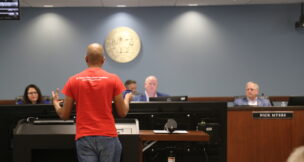Financial literacy links young adults with American Dream
Katherine Cecala Guest Commentary//August 9, 2024//
Financial literacy links young adults with American Dream
Katherine Cecala Guest Commentary//August 9, 2024//
Since the 1890s, when a group of homebuilders linked the American Dream with homeownership, generations of Americans have seen buying a house as a way to build wealth and create a legacy for their families.
These days, however, that dream may feel out of reach for young adults striving to purchase their first home. Gen Z-ers and young Millennials are facing challenges like rising home prices and interest rates, and Consumer Affairs notes that Generation Z has 86% less purchasing power than Baby Boomers had when they were in their 20s.

It’s no surprise then that one in three Gen Z-ers don’t believe they will own a home in their lifetime, but it’s not for lack of interest. A survey conducted by Junior Achievement and Fannie Mae in 2022 found that most teens (88%) would like to own a home someday. However, fewer than half (45%) of surveyed teens could correctly identify the definition of a home mortgage and 76% said they lacked a clear understanding of credit scores.
This lack of financial literacy at an early age could be contributing to Generation Z’s struggle to qualify for mortgages due to high debt, low credit scores, and problematic credit histories. Especially when you consider that financial literacy isn’t always taught in school, but is required almost every day to navigate the economic realities of life.
Currently, 25 U.S. states have some financial literacy requirements in high school, which is nearly double what it was just a decade ago. However, the required courses typically last only one semester and are taught at one grade level, whereas other courses like science, math, English, and social studies, are designed to meet students where they are over multiple grades.
Junior Achievement of Arizona views financial literacy as “the other literacy.” Introducing teens to financial concepts in one course, and then expecting students to be financially capable would be the equivalent of taking a student who doesn’t know their ABCs and expecting them to read a novel, especially when it comes to more complex subjects like credit scores, escrow, and mortgage payments.
JA’s innovative approach includes developing age-appropriate curriculum covering various topics like budgeting, saving, investing and understanding credit for students from elementary school to high school. It also emphasizes experiential learning through hands-on activities, and utilizes volunteers from the business community to help students connect classroom learning to the real world.
Research shows the impact of JA’s model:
- 82% of JA alumni agree they have a strong financial footing.
- 68% of JA alumni between the ages of 18 and 29 say they are financially independent of their parents, compared to 30% of Americans in that age range.
- JA alumni also report purchasing their first home at 29. The National Association of Realtors reports the average age Americans purchase their first home is 36.
Prioritizing ongoing financial literacy education goes far beyond the dream of homeownership. It gives students the tools to increase their chances of achieving economic security as adults. And that is an American Dream we can all get behind.
Katherine Cecala is president of Junior Achievement of Arizona.














































